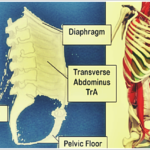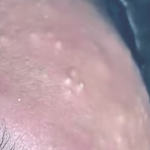Pneumonia is an infection in your lungs. There are many types of pneumonia such as dust pneumonia and bacterial pneumonia. Dust pneumonia is a type of pneumonia which occurs as a result of inhaling dust from the environment. Pneumonia causes the alveoli or air sacs to become inflamed making it difficult for you to breathe. Dust pneumonia is also known as chemical pneumonia.
Causes
Dust or chemical pneumonia is caused by the following:
Environmental factors: Exposure to pollutants in the environment can cause dust pneumonia. In the environment, you can inhale dust particles that are toxic into your lungs. Normally, when you inhale little amounts of dust, the cilia which are small hair like structures in the lungs protect it against unfamiliar particles.
But too much exposure to dust can damage the cilia thus impairing its function of protecting the lungs. This allows the dust particle to enter and reach the alveoli and cause inflammation. This also irritates your lungs and you can get pneumonia.
Besides dust, you can inhale toxic gases and chemicals which can cause inflammation in your lungs.
Signs and Symptoms of Dust Pneumonia
Symptoms of dust pneumonia can vary greatly and they are influenced by a number of factors such as:
- Exposure environment: The place of exposure can determine the nature of your symptoms. For example, you can exposure yourself to dust particle while you are indoor or outdoor. A person exposed to dust particles in the outside environment may only have burning eyes and cough. While another person exposed to the same but indoors may experience respiratory failure.
- Type and strength of dust particles: The type of dust particles and its strength can influence your symptoms. When you inhale chlorine while another person breathes smoke, the symptoms you will experience are different.
- Time of exposure: The length of time you expose yourself to dust particles can determine the severity of the symptoms. If you expose yourself to dust particle for one minute, you will inhale little amount of dust particles. But if you expose yourself longer to dust particles, the symptoms will be worse.
The following are the symptoms of dust pneumonia which vary according to their severity:
The mild symptoms of dust pneumonia include:
- You feel pain in your chest, high fever and headaches. You may experience shortness of breath or breath frequently which may be accompanied by difficulty in breathing and pain. Nausea and flu like symptoms are also common.
Dust pneumonia symptoms may become severe. The following are severe symptoms of this condition:
- Your lungs can be inflamed. You may feel burning sensation in your throat, nose, eyes and lips. You may have a wet cough which is accompanied by yellowish or greenish mucus. Sometimes you may also have a dry cough with blood.
Diagnosis
Diagnosis of pneumonia is based on physical examination and other tests. In physical exam, your doctor may ask you the symptoms and medical history in order to get information about the condition you are having. Your doctor will use a stethoscope to listen to your lungs when you breathe.
The tests that your doctor may order include:
Chest X-rays: Your doctor may conduct chest x- rays to find out if there are problems with your respiratory system.
Apart from chest X-rays, your doctor can order other tests if your symptoms are severe.
- Sputum test: Your doctor will take a sample of your sputum or mucus and analyze it to find out the cause of infection.
- Computed tomography scan: CT scans of your respiratory system can be done to create detailed images of these structures. These images are evaluated to find out the problem.
- Bronchoscopy: In this test, a tube called bronchoscope is inserted into your lungs through the throat to examine the airways to determine the cause of the problem.
Treatment for Dust Pneumonia
Treatment for dust pneumonia depends on the severity of its symptoms. The following treatment option can be used:
- Medications: Your doctor may suggest drugs to relieve pain and fever such as aspirin, ibuprofen, etc. These drugs can be bought over-the-counter.
- Cough drugs can also be recommended to suppress cough.
Incase your symptoms are severe; you will be hospitalized and given the following treatment options:
- Intravenous antibiotics. These are injected via your vein to treat bacterial infection.
- Oxygen therapy: This therapy is used to maintain sufficient oxygen levels in your body. Your doctor gives you a nasal tube and face mask so as to receive oxygen. You may also need a ventilator to receive oxygen. A ventilator is a machine that supports breathing.
- Respiratory therapy: This test may involve certain breathing exercises or delivering medicines directly into your lungs. Your doctor may teach you breathing exercises to help you maximize oxygen given to you.
You can take some self-care measures to prevent dust pneumonia such as:
- Avoid exposure to the source of irritants.
- Change your clothes immediately when you are exposed to chemicals as well as take a shower to get rid of the chemical.
- Keep chemicals and other toxic substances in a good place and away from the reach of children.



